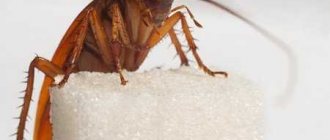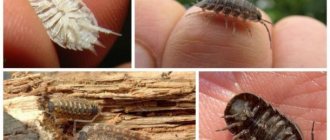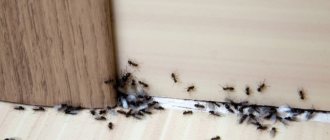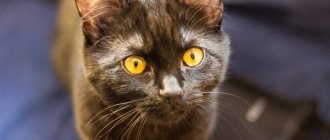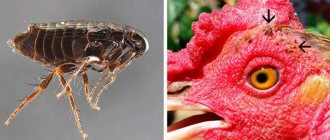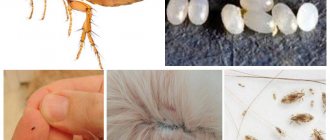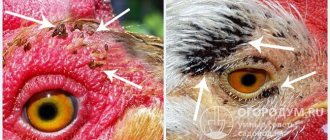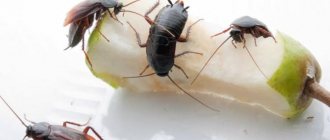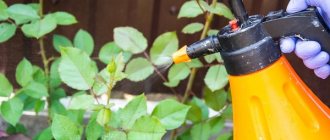Fleas are annoying blood-sucking parasites of warm-blooded animals and humans. Four-legged family members - dogs, cats, ferrets, rabbits and others - inevitably become hosts and carriers of fleas. This causes a lot of concern: painful bites, obsessive itching, irritation, dermatitis, and the risk of infectious diseases.
The flea life cycle consists of 4 stages: egg, larva, pupa and adult. To rid an infected room of them, it is necessary to destroy all stages. Fearing the toxicity of chemicals - a powerful weapon against insects - some people prefer folk remedies for fleas in the house. Over the years of centuries-old fight against fleas, humanity has accumulated considerable experience. How to wash the floor, treat an animal, protect against bites - there is a folk remedy for household fleas for any occasion. How to get rid of infection and prevent recurrence - let's break it down.
Salt
This simple remedy will help you get rid of fleas in carpets at home. Salt is famous for its dehydration properties. In contact with salt, the outer coverings of fleas are destroyed, the insects lose vital moisture and, as a result, die. To use this folk remedy you will need:
- Table salt or sea salt (the amount of salt depends on the area to be treated)
- Salt shaker or spice jar with holes
The procedure is as follows:
- If the salt is coarse, grind it before use.
- Pour the salt from the bag into a jar, leaving enough space up to the lid with holes so that the salt spills freely
- Sprinkle salt on the carpets in each room, rubbing lightly so that the crystals penetrate into the base of the pile where the larvae and pupae hide.
- Leave for 1-3 days
- Then vacuum the carpets thoroughly
How to prepare an apartment for disinfestation? Features of the procedure
It is necessary to carefully package and remove all food products, because if insecticide gets on them, the food will become unsuitable for food.
Before treating the premises, you need to do a thorough cleaning of the apartment:
- wash all surfaces with disinfectants;
- vacuum the carpets;
- wash and dry bedding in the sun;
- clean upholstered furniture with a steam generator;
- treat fabric and fleecy items.
It is important to protect animals from pests. To do this, you need to use anti-flea collars, drops on the withers or sprays.
Only after cleaning can you proceed directly to the use of insecticides. Processing should be carried out wearing protective equipment (gloves and a respirator).
After treatment, you need to close all windows for 3-5 hours and leave the room. You should not stay in the room where the treatment was carried out for too long, as harmful fumes may enter the respiratory tract.
After the specified time, it is necessary to carry out wet cleaning to clean all surfaces of the drug, and to ventilate the premises well.
Soda
It is used in a similar way, but the difference with soda is that it acts on larvae and eggs. In combination with salt, these folk remedies destroy the visible and invisible stages of flea development. The method is inexpensive and safe even for children and pets. Moreover, every housewife has salt and soda, and their use does not require complex preparations.
A mixture of salt and soda is used to treat carpets, rugs, animal bedding and upholstered furniture on which a dog or cat periodically lies.
- Check the expiration date of baking soda: if there is no packaging left with the date, just add 2-3 drops of vinegar to a spoon with soda - if bubbles appear, then the soda is still good
- Mix baking soda and salt in equal proportions
- Apply the mixture evenly to the carpets using a brush or broom
- Leave the mixture overnight and vacuum up the next morning.
- Repeat the procedure every 4 days for two to three weeks.
Sagebrush
This is an ancient, proven folk remedy for fighting insects. To get rid of fleas, they hung freshly picked grass in the house, then learned how to obtain essential oil, the pungent smell of which repels insects. To this day, the tradition of using wormwood remains in demand.
Wormwood is found in tincture form, as freshly harvested plants, essential oil, or ground herb. Each of them is used as a folk remedy for fleas. It should be noted that the strong odors of plants do not kill, but only repel fleas.
Wormwood tincture for fleas
The product helps get rid of parasites and protect your family and pets from diseases carried by fleas. The tincture dissolves in water and is used to clean floors against fleas. It is also used to treat the hair of dogs and cats. The tincture is sold at the market or in a pharmacy. To prepare the tincture yourself, pour crushed dry wormwood with vodka and let it brew for two weeks.
Wormwood oil for fleas
Wormwood oil works by releasing aromas that repel fleas and other insects without killing them. The skin and fur of the animal are treated with wormwood oil, and bowls with oil are placed on the floor around the apartment.
Wormwood oil is available in pharmacies. To prepare this folk remedy yourself, pour dried crushed wormwood with olive oil in a small jar. Shake the mixture well and put it in a dark place for 10 days. After straining, the oil is ready for use.
Wormwood decoction for fleas
To prepare a decoction of wormwood at home
- Grind freshly harvested or dried herbs
- Place in a saucepan of boiling water and boil for 5 minutes
- Leave to cool
The resulting decoction is suitable for treating animals, as well as bedding, furniture, carpets and cleaning floors against fleas.
The insecticidal properties of wormwood are beyond doubt; it is used in agriculture, grown near potato and carrot fields to repel pests. So to combat seasonal flea infestations, you can grow mugwort in your yard or even inside your home.
But wormwood is a strong allergen, so be careful. For those who are prone to plant allergies, this folk remedy is not suitable. Do not use wormwood for medicinal purposes without consulting a doctor; for some, it causes unwanted reactions in the body.
Essential oils for fleas in the apartment
The use of essential oils against fleas and other pests in the apartment reduces the level of chemical use. Some oils are suitable for direct contact with skin, while others are intended for use on clothing and indoor surfaces. Use essential oils with caution in the presence of children or pregnant women. As a rule, 25 drops of oil are diluted in 5 liters of warm water.
Lavender for fleas
It is an all-purpose insect repellent with a sweet scent. Scientific testing of lavender against the four stages of flea development at Ohio University confirmed its effectiveness. The oil is prepared by distilling the Lavendula officinalis herb.
This folk remedy is used to treat pets, bedding, rugs and rugs.
In 2007, one study in South Africa noted that solutions containing 20-30% lavender were comparable in effect to the use of diethyltoluamide. Although fleas are not killed by lavender, they cannot tolerate it.
Eucalyptus for fleas
Eucalyptus oil emits a characteristic methanol odor that repels fleas. Typically used in conjunction with other oils, such as citronella oil. The habitats of pets in the apartment are treated with an aqueous solution of eucalyptus oil. Eucalyptus does not kill, but only repels fleas.
Pennyroyal
Dry pennyroyal leaves contain 3% essential oil. This oil, known since ancient times, belongs to the mint genus. Sprinkling freshly picked or dried crushed plants around the house to repel insects is a proven folk remedy for fleas. Application to the skin or fur of animals is contraindicated, as toxic consequences may develop.
Lemongrass
This aromatic herb belongs to the grass family. Lemongrass is common in southeastern Asia and Australia. Lemongrass essential oil is also used as a repellent.
Cedar oil
Cedar oil is obtained by cold pressing the peeled kernels of the nut. Unlike other oils, cedarwood oil has both repellent and toxic effects on fleas. The safety of using this folk remedy for pets is controversial - to avoid undesirable consequences, it is recommended to use low concentrations of oil.
Basil oil
The repellent effect of basil oil on fleas is based on its persistent, specific aroma. This folk remedy for fleas in the apartment is safe for the health of people and animals.
Thyme oil
Thyme in its pure form is used as an insecticidal, fungicidal and bactericidal agent - it has a toxic effect on insects, fungi and bacteria. Put some thyme oil on your pet's collar and fleas will leave him alone.
Rosemary oil
This product is intended to protect only dogs as it is toxic to cats. Rosemary oil has repellent and antiseptic properties, making it ideal for washing dogs whose skin has developed a reaction to flea bites. The oil will help restore the skin and drive out fleas.
Clove oil
Just like rosemary oil, clove oil is contraindicated for cats. Apply a couple of drops of oil to your dog's collar and add to the water when washing your pet's bedding.
Tea tree oil
This folk remedy will help get rid of fleas and fill the room with a pleasant aroma. For animals it is used in the form of drops on the withers, including cats. Apply one drop the first time and observe how the animal feels, then, if everything is fine, apply another 4-5 drops
Tar soap for fleas
The composition of tar soap includes sodium salts, citric acid, table salt, thickeners and the main component - birch tar.
Tar is a thick black liquid with a pungent odor and bactericidal, anti-inflammatory and insecticidal effects. Tar soap relieves itching and irritation. This is a natural folk remedy and it is inexpensive.
Tar is available in the form of solid and liquid soap, as well as shampoo. It is more convenient to treat pets with liquid products. But if you use hard soap, then first soak the bar of soap in water until foam forms. Tar soap is also used for washing floors, treating walls and washing pet accessories against fleas.
However, the use of tar soap requires moderation. According to a study by the New Zealand Skin Diseases Association, there was an increased risk of skin cancer associated with the use of tar soap in animals, but there was no effect on humans.
Video “Bathing a cat with tar soap”
Preventive actions
Having encountered a problem and resolved it, it is necessary to take care that the flea infestation does not recur.
Prevention of infection of an apartment or private house can be called:
- maintaining normal air humidity readings;
- protecting animals with flea collars or special medications;
- periodically disinfecting an apartment or private house using available means.
Flea bites can be very dangerous because the parasites are carriers of many serious diseases. For this reason, it is imperative to fight them and completely remove the flea colony.
Vinegar for fleas in the apartment
Vinegar is used in everyday life for cleaning and odor removal, to remove ants in the kitchen, and in the garden as an insecticide and herbicide. Vinegar is known as a deodorizing agent for dogs and cats and, of course, as a folk remedy for fleas. In this case we are talking exclusively about apple cider vinegar! Apple cider vinegar does not kill fleas, but it does create an inhospitable environment that drives them out.
“Both fleas cannot tolerate the smell or taste of vinegar, which means they will not stay on an animal that smells like apple cider vinegar. Vinegar is more suitable as a preventative rather than a therapeutic agent for animals."
Darcy Matheson, Greening Pet Care
Dousing a bottle of apple cider vinegar on your dog will not magically make the fleas disappear. There are many known uses for this natural repellent, for example, as an additive to drinking water, in the form of a spray or a bath.
- Bath: Mix 1 cup of apple cider vinegar and 1 liter of warm water and treat your pet with the resulting solution.
- Drinking water: Add a teaspoon of apple cider vinegar to 1 liter of water and stir. Your pet will not like the drink at first, but over time he will start drinking it.
- Spray: Mix two cups of water and two cups of apple cider vinegar. Pour the solution into a spray bottle and thoroughly treat the animal with the solution from head to tail and do not rinse, the smell of vinegar will disappear as soon as the fur dries.
Signs of infection
The main sign of infestation in a poultry house is restlessness of the birds. If such a symptom is detected, it is worth examining them by lifting the feathers. Fleas don't sit still. When disturbed, they move quickly, which makes them different from ticks. They are very slow and stay in one place for a long time. In advanced cases, ectoparasites affect exposed areas of the body. In particular, they settle around the eyes. When viewed, blood-feeding insects resemble growths on the skin. To get rid of them, folk recipes and modern treatment methods are used.
Boric acid for fleas
Boric acid is a low-toxic inorganic mineral with insecticidal, fungicidal and herbicidal properties. Serves as the basis for a number of commercial pest control products. Boric acid causes loss of moisture in the body of insects, dehydration occurs, and the insect dies.
It does not emit an odor and therefore does not repel, but kills fleas, maintaining an insecticidal effect for a long time.
Boric acid is used as follows:
- Remove toys and other things from the floor of the room being treated
- Vacuuming your carpets to remove dirt and dust will improve the quality of the finish. If necessary, do wet cleaning
- Sprinkle boric acid powder onto carpets and rugs, paying special attention to areas where your pet spends time.
- Using a brush, spread the powder evenly over the carpet
Boric acid kills flea larvae, but has a weak effect on adult fleas, so a noticeable result will appear in 2-6 weeks, until the adult population dies. 48 hours after treatment, clean with a vacuum cleaner. Although boric acid is a long-lasting treatment, repeated treatments will be required.
Boric acid has almost no side effects, except for mild skin and eye irritation. Use in the garden is not recommended due to toxicity to beneficial plants and birds.
Description
Chicken fleas cannot survive without a host - they require a temperature of +40°C for normal life. Their body is flattened on the sides, oval in shape. There are no wings, the hind legs are highly developed. Parasites have antennae, which makes them different from other representatives of this order of arthropod insects. The eyes are well developed. The shell is very dense and strong, which increases the chances of survival. Color dark brown.
This species cannot parasitize on humans due to the higher density of human skin and lower body temperature.
The parasites quickly spread throughout the house - females lay about four eggs a day and scatter them with their strong hind legs, increasing the coverage of the territory. Knowing what fleas look like, you can differentiate them from other ectoparasites of chickens. Their average lifespan is 3-5 months. In favorable conditions they can live longer.
Pyrethrum for fleas
Pyrethrin is a natural insecticide obtained from the raw extract of the chrysanthemum (Pyrethrum). It has been used for pest control since ancient times and is considered safe. Pyrethrum is available in powder or spray form. Pyrethrum is a neurotoxic insecticide. It is also known to have insect repellent properties. Used as a base ingredient in a number of commercial flea and tick products, mainly powders and sprays.
Insecticides
Chemical insecticides are deadly to fleas. Toxic substances paralyze their nervous system, causing muscle spasms, stopping blood flow and death. Aerosols and liquids are popular for treating premises:
- Dichlorvos;
- Karbofos;
- Raid;
- Clean house;
- Butox 50;
- Medilis-Ziper;
- Raptor.
They contain insectoacaricides: cypermethrin, permethrin, tetramethrin and other substances from the pyrethroid group. These compounds remain on treated surfaces for up to 30 days and do not disintegrate for a long time under the influence of sunlight or high temperatures. Chemical insecticides pose a danger to humans - inhalation of vapors can cause poisoning and associated symptoms. Therefore, when working with chemicals, you must observe safety rules and follow the manufacturer’s recommendations indicated on the packaging.
To treat or prevent infection of cats and dogs, it is recommended to use collars, drops and sprays containing safer insecticidal components. In pet stores you can buy effective anti-flea products based on fipronil or imidacloprid:
- Frontline;
- Advantix;
- Foresto;
- Barrier;
- Celandine;
- Leopard;
- Dana;
- Fiprist.
A single treatment is sufficient to kill fleas on an animal’s body. For preventive purposes, it is allowed to apply the drug no more than once a month.
Treating your cat for fleas.
Bleach for fleas
The fight against fleas often drags on for a long time. This is because most flea treatments do not kill eggs. The final extermination of the population requires exposure to all life stages of flea development. Bleach is suitable for killing eggs. Treat carpets and pet habitats with a solution of bleach and water. Add chlorine bleach when washing pet accessories.
But this method requires extreme caution. Chlorine is toxic if ingested, so do not allow your animal to come into contact with the treated surface. When treating carpets and textiles, keep in mind that bleach acts as a bleach.
Danger of parasites
Infection with blood-sucking ectoparasites leads to a decrease in egg production - laying hens experience serious discomfort, so the functions of the reproductive system are disrupted. Fleas feed on blood, which gradually leads to exhaustion. Birds are constantly itching and pulling out their feathers. The wounds inflicted become infected and inflamed. Insect bites lead to the spread of various infectious diseases through the blood, including:
- brucellosis;
- salmonellosis;
- trypanosomiasis;
- encephalitis.
These diseases are potentially dangerous to humans. How to treat chickens for fleas, you should ask your veterinarian - he will offer an effective remedy, taking into account the scale of the problem.
Tansy for fleas
There are 30 types of tansy growing in Russia. An essential oil containing camphor and thujone is obtained from it. Thujone is subject to strict maximum concentration limits in oils and other products because it is toxic. To prepare flea repellent, place tansy leaves and flowers in a bucket, add hot water and let sit. The resulting solution is used to treat dog and cat accessories, as well as to wash the floor.
Despite the wide selection of folk remedies for fleas, in some cases, ready-made medications are required for animals. Purchase flea medications from veterinary pharmacies after consultation with a veterinarian.
Bites: how to recognize and treat
A grass flea bite causes a lot of inconvenience. First itching appears, and in its place you can find redness with a focus in the center. The affected area begins to swell, the skin hardens, and the itching increases.
On a note! This reaction occurs due to the fact that a flea enzyme enters the bloodstream when bitten. It is to this that our body responds with such an allergic reaction!
As soon as you notice the symptoms described above, it is advisable to immediately treat the bite sites.
- First of all, we wash the affected area with clean water and treat it with an antiseptic.
- Then, to relieve itching and pain, apply something cold to this area and hold it for several minutes.
- After the discomfort has completely passed, the bite site can be additionally lubricated with cream or lotion containing essential oils.
Important! If the pain continues to increase, and the bite site becomes more and more inflamed, then in such a situation it is necessary to consult a doctor!


